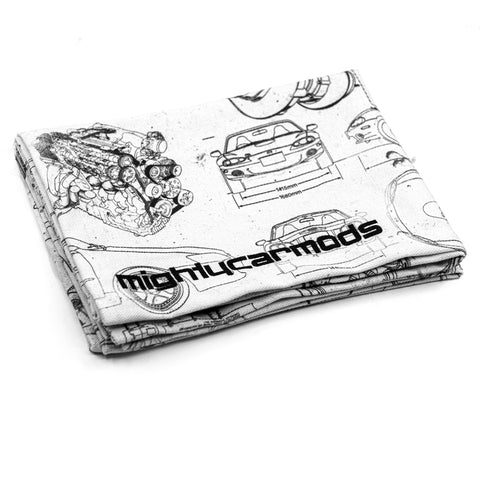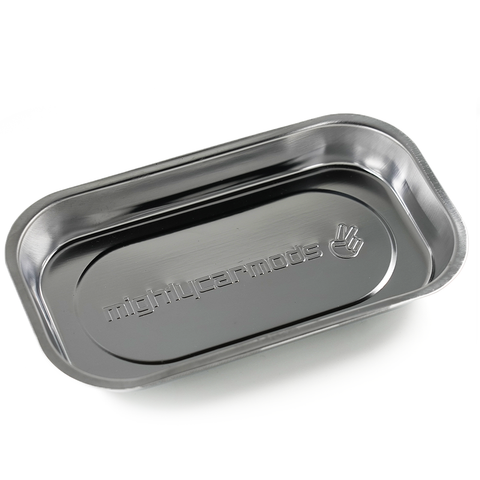
The Golf GTI was a secret unofficial project but became the most important hatch of all time
Have you seen MOOG's EXCLUSIVE drive of the new Mark 8 Golf R? He was invited by Volkswagen Australia to take the new all-wheel-drive, turbocharged beatsie to a racetrack and drift the pants off it! CHECK IT OUT HERE!
While some people aren't fans of VW's mid-size hatchback (hi, Marty!), the fact we even have go-fast Golfs is amazing. You see, in 1974 when Volkswagen whipped the covers off their controversial replacement for the long-standing Beetle, the brand new car was shockingly conventional.
A liquid-cooled, front-engine, front-wheel-drive C-segment two-box hatchback was to replace their beloved rear-drive, air-cooled rotund Beetle. And it was slow.

The good strudel-fans at VW had no plans to release a performance model when the Golf went on sale in May of 1974. This car was volume transport and dort-fiends be damned to heck, by gum!
Thankfully, one bloke called Anton Konrad (who happened to be head of Volkswagen's Press Department) had the ear of an engineer by the name of Alfons Lowenberg and they started developing Der Spicen Golf von Dortenhausen in secret.

Konrad and Lowenberg soon had the support of a clutch of other go-fast fanbois, including Hermann Hablitzel, chassis expert Jürgen Adler, Gunter Kühl, suspension expert Herbert Schuster, engine guru Franz Hauk, and Horst-Dieter Schwittlinsky. Old Mate Horst didn't just have the best name on the Top Secret Squirrels project, he also came up with the GTI name that many believe stands for Gran Turismo Injection. It certainly was a better name than "Der Spicen Golf von Dortenhausen".

The prototype used a twin-carburettor-fed EA827 engine... and a Sirocco body instead of a Golf shell. After management declared the slammed, carburettor-fed prototype "das nugget is ein scheiße wagen" the Skunkworks GTI dev team purloined the 81kW 1.6-litre EA827 from the Audi 80 GTE engine as it featured Bosch K-Jetronic injection and the "Kontinuierlich" injection suppressed the dorts more than the twin devil's buckets version did.
A full year after sales of the regular Golf models began (May 1975), the head cheeses at VW approved the GTI for sale, with sales beginning in August of 1976 (just in time for disco fever, baby!). Riding on lowered suspension now equipped with swaybars, and featuring bigger 13-inch wheels, ventilated disc brakes, sporty body additions like wheel arch flares, a lip spoiler and red trim rim around the grille, it certainly looked the part.

One key addition following the approval of the project was Gunhild Liljequist, not because the team needed more bad arse names but to sauce the GTI model up over the regular Golfs for peasants and people who eat their greens. Her contributions included the tartan-trim on the seats and dimpled "golf ball" shift-knob, which have gone on to become iconic style elements of the hot hatch scene.

This 810kg featherweight, which was never officially developed as part of VW's masterplan for the Golf range, has gone on over the ensuing 46 years to become one of the most important hatchbacks of all-time. While some say a 1967 Simca and '71 Autobianchi came first, the GTI truly spawned the hot hatch movement, won countless races in touring cars and rallying, and helped build the sport compact/tuner scene in Europe.
The Mk1 GTI was upgraded with a five-speed manual in 1979, then the engine was bumped up to 1.8-litres and 82kW in 1982. Despite some bin water-drinker at VW figuring only 5000 people would buy one, more than 462,000 Mk1 GTIs were sold by the time the model was replaced with the Mk2 in 1983.

The Mk2 GTI would go on to build the GTI legacy into one of legend, and while the Mk3 and Mk4 GTIs aren't regarded as the greatest examples, things certainly turned around with the hand-build, all-wheel-drive V6-powered Mk4 R32, Mk5 GTI and R32, and the Mk6-on Golf R models.







